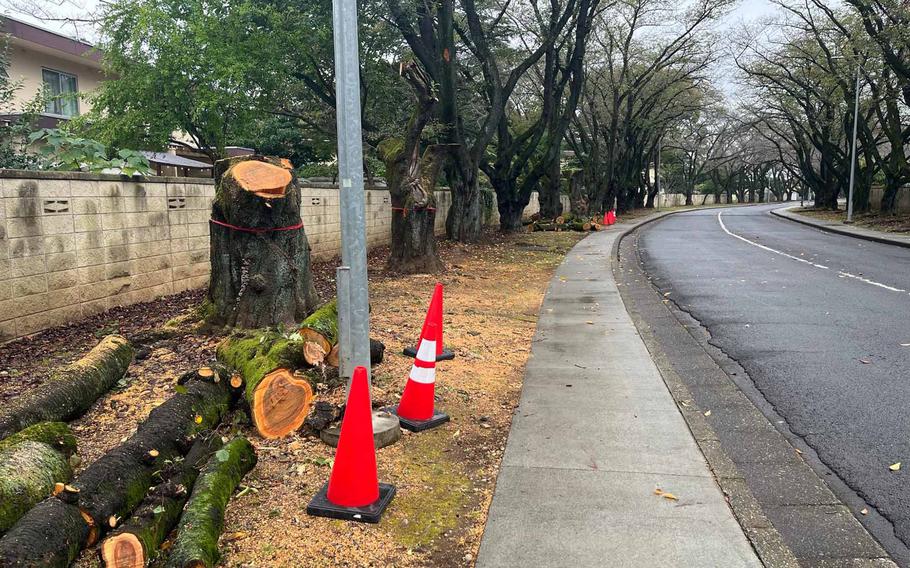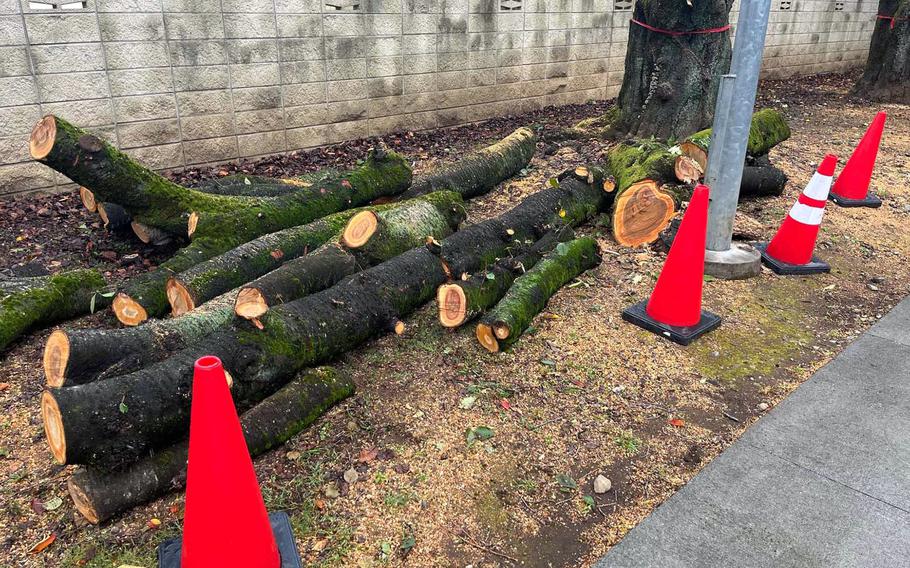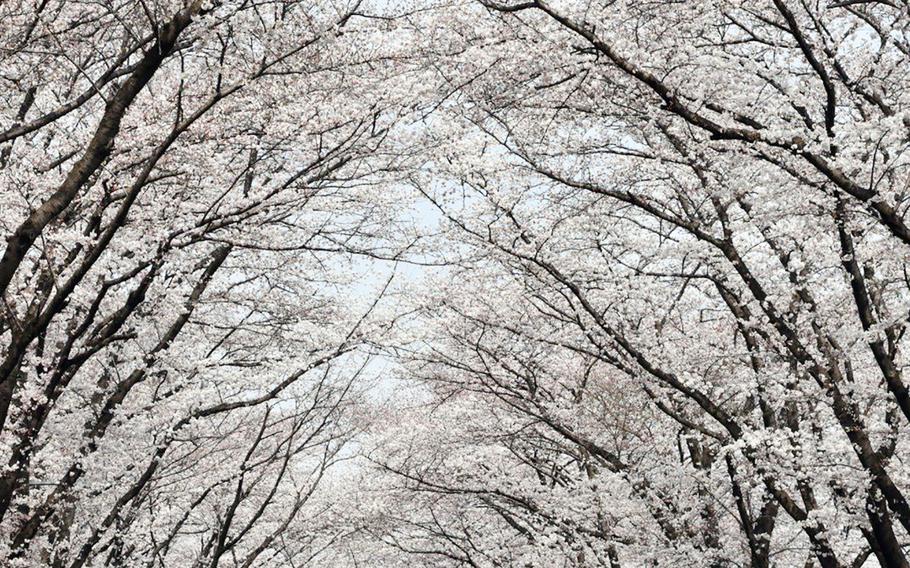
This dilapidated cherry blossom tree was cut down and removed from the east side of Yokota Air Base, Japan, Oct. 18, 2024. Removing unhealthy trees helps prevent diseases and pests from spreading to other trees. (Jeremy Stillwagner/Stars and Stripes)
YOKOTA AIR BASE, Japan — Several of the iconic cherry blossom trees that make this airlift hub in western Tokyo a popular spot to visit each spring have gone missing.
Some trees that line McGuire Avenue just inside the east gate were deemed too old, unhealthy or deteriorated and subsequently removed, Master Sgt. Nathan Allen, spokesman for the 374th Airlift Wing, told Stars and Stripes via email this week.
Seven trees have been removed since Oct. 18. Removing the trees is not part of any specific project and is carried out as needed, according to Allen.
The air base opens once a year for its annual cherry blossom festival on McGuire Avenue, where crowds gather to admire the bloom.

This dilapidated cherry blossom tree was cut down and removed from the east side of Yokota Air Base, Japan, Oct. 18, 2024. Removing unhealthy trees helps prevent diseases and pests from spreading to other trees. (Jeremy Stillwagner/Stars and Stripes)
Removing unhealthy trees is nothing new in Japan. Tokyo has approximately 850 miles of roads that are adorned with roadside trees that are inspected regularly, according to the Tokyo Bureau of Construction’s website.
Trees found to be unhealthy or weak are rehabilitated or cut down to ensure they don’t topple onto the roadways during storms and potentially block emergency vehicles.
The potential hazards of weak roadside trees are no different on U.S. military installations.
“Removing unhealthy trees on the east side ensures safety for the community, as weak and damaged trees can pose serious risks to pedestrians and vehicles,” Allen said. “Additionally, removing dilapidated trees helps protect local ecosystems and contributes to overall environmental health.”
Cutting can prevent the spread of disease and pests to neighboring trees. Yokota has previously removed trees to stem pests.
In April, the Air Force faced a swarm of ambrosia beetles that plagued thousands of trees across its facilities in western Tokyo. The beetles carried a fungus that weakened the wood and allowed the beetle larvae to get inside and grow.

Sakura bloom on the east side of Yokota Air Base, Japan, March 27, 2018. (Stars and Stripes)
Because of the infestation, 80 trees were cut down and removed from Yokota and the nearby Tama Hills Recreation Area, popular for its 18-hole golf course.
Addressing unhealthy trees on the base prevents potential hazards from spreading to surrounding areas, Allen said.
Replacement trees were planted after the beetles were dealt with, but it is uncertain when the recently cut cherry trees will be replaced.
“The decision to replant new trees are still being discussed,” Allen wrote. “Experts from the 374th Civil Engineer Squadron are formulating a plan for future planting along McGuire Avenue for the 374th Airlift Wing commander’s approval.”